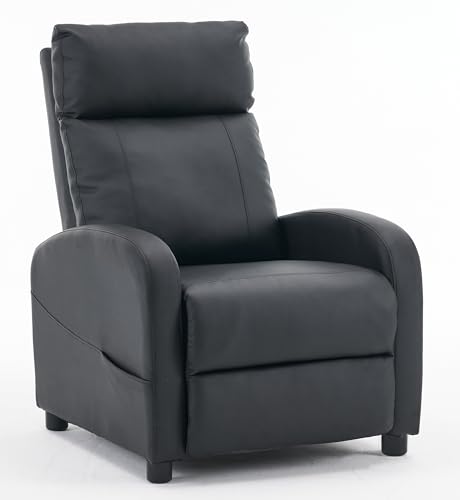The Evolution of Modern Recliners: Comfort and Design in the 21st Century
Modern recliners have transcended their conventional role as simple, adjustable seating choices. As soon as limited to the realms of function, these chairs have actually evolved into sophisticated furniture pieces that combine ergonomic style, style, and innovative technology. Today's recliners are not just furnishings; they are an integral part of the home environment, improving relaxation, entertainment, and overall wellness. This post will look into the evolution of modern recliners, explore various types and features, and respond to some regularly asked questions.
A Brief History of Recliners
The story of recliners started in the late 19th century when they initially emerged as an innovation in furnishings style. Originally called "lazy boys," these chairs were designed for comfort and relaxation. Over the years, their material structure, ergonomic designs, and functionalities have actually dramatically changed, leading to the modern recliner we see today.
Innovation Through Time
The improvement in technology over the decades has actually played a vital function in the development of modern recliners. Early recliners included basic reclining mechanisms, generally depending on mechanical levers. On the other hand, today's models include numerous technological developments, consisting of electric motors and adjustable functions that allow users to personalize their seating experience.
Key Milestones
| Year | Turning point |
|---|---|
| 1928 | Intro of the first reclining chair |
| 1950s | Mass production and marketing of recliners |
| 1980s | Incorporation of swivel and glider systems |
| 2000s | Rise of ergonomic styles and memory foam |
| 2010s | Integration of wise innovation and USB ports |
The Anatomy of a Modern Recliner
Modern recliners come loaded with a variety of features designed to improve user convenience. Comprehending these features can help consumers make well-informed options when choosing a recliner.
Key Features to Consider
Reclining Mechanism
- Manual recline: Operated with a lever or a latch.
- Power recline: Uses a motor for uncomplicated reclining, often with numerous positions.
Material Options
- Leather: Offers a classic, luxurious feel.
- Fabric: Available in various colors and textures, ideal for family use.
- Faux leather: A more inexpensive and animal-friendly option to genuine leather.
Ergonomics
- Back assistance: Critical for back health, adjustable alternatives readily available.
- Head and neck assistance: High-back styles and built-in headrests.
- Ottoman compatibility: Many modern recliners feature integrated footrests or matching ottomans.
Technological Additions
- USB charging ports: Convenient connectivity for gadgets.
- Massage features: Varying intensity levels for relaxation.
- Heating functions: Helps soothe hurting muscles.
Style Styles
- Contemporary: Sleek, minimalist designs appropriate for modern homes.
- Standard: Classic styling and deep cushions for a comfortable feel.
- Eco-friendly options: Made from sustainable materials.
Types of Modern Recliners
In the diverse world of modern recliners, different designs accommodate different needs and tastes. Here's a rundown of the most popular recliner types today:
Popular Recliner Types
Wall-Hugger Recliners
- Need very little space, suitable for smaller sized homes.
Lift Recliners
- Geared up with a lifting mechanism that gently helps users in standing up.
Rocker Recliners
- Combine the reclining and rocking functions, perfect for relaxation.
** reclining Sectionals **
- A sectional sofa that allows multiple individuals to recline at the same time.
Home Theater Recliners
- Designed for cinema-like experiences, often including cup holders and reclining seats.
The Very Best Places to Use Modern Recliners
Modern recliners can improve different living spaces in a home. Here are some ideal places:
- Living Room: The central event spot for relaxation and home entertainment.
- Home Theater: Upgrades the movie-watching experience with convenience and design.
- Bedroom: Serves as a relaxing spot for reading or unwinding before sleep.
- Office: Offers a relaxing break location throughout long work hours.
Regularly Asked Questions (FAQs)
What is the typical life-span of a recliner?
The life expectancy of a recliner can differ considerably based on its construction and usage. Nevertheless, a premium recliner can last anywhere from 7 to 15 years with appropriate care.
How frequently should I clean my recliner?
It's suggested to clean your recliner at least once a month. Utilize a microfiber fabric for fabric recliners and a soft leather cleaner for leather chairs to preserve their look and health.
Are power recliners more pricey than manual recliners?
Generally, yes. Power recliners utilize sophisticated innovation that often comes at a greater rate point compared to manual recliners.
Can recliners be fixed if they break?
Yes, many recliners can be fixed. Problems such as broken mechanisms or harmed upholstery can generally be solved through expert repairs, depending on the seriousness.
What should I look for when buying a recliner?
Consider aspects such as the reclining system, material, ergonomic features, size, style, and any additional innovation that fits your lifestyle and home decoration.
The modern recliner has come a long method from its modest origins. Today's recliners are not merely functional pieces of furnishings but are designed to boost the general quality of life for their users. As innovation continues to advance and customer preferences develop, we can anticipate to see a lot more innovation on the planet of recliners. Whether seeking a stylish centerpiece for a living space or a comfortable area for relaxation, today's recliners offer something for everybody. With Luxury Leather Recliner of alternatives readily available, picking a recliner has actually never been simpler or more exciting.

